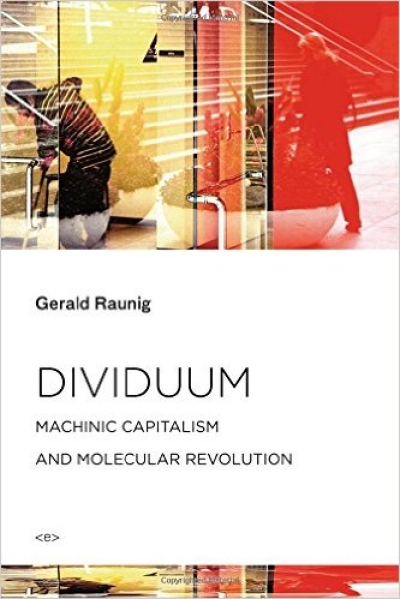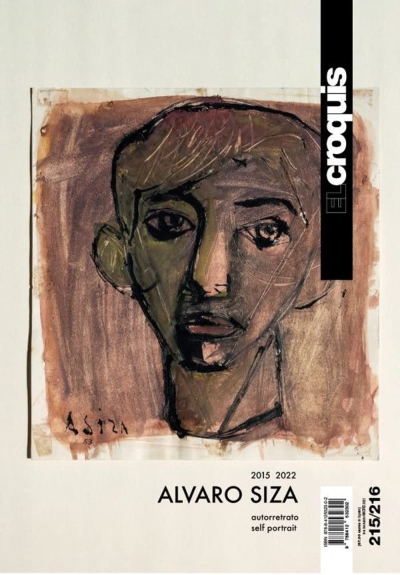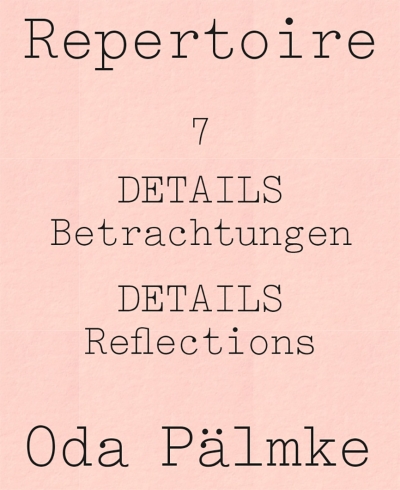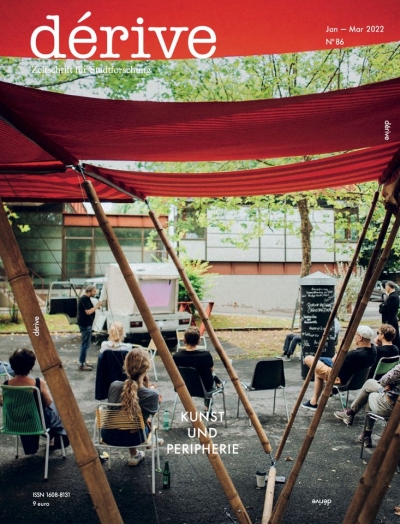Finn Dammann, Boris Michel (Hg.)
Handbuch Kritisches Kartieren
Krypto-Kunst Kolja Reichert
Krypto-Kunst. NFTs und digitales Eigentum (Digitale…
Phil Bernstein
Machine Learning. Architecture in the Age of Artifical…
gerade nicht auf Lager
Alexander Stumm, Victor Lortie (Hg)
Überbau. Produktionsverhältnisse der Architektur im…
Giovanna Borasi (Hg.)
A Section of Now. Social Norms and Rituals as Sites for…
gerade nicht auf Lager
Boris Groys
Philosophy of Care
gerade nicht auf Lager
Terry Smith
Curating the Complex and the Open Strike
gerade nicht auf Lager
Pedro Neves Marques (ed.)
YWY, Searching for a Character between Future Worlds Gender…
gerade nicht auf Lager
Bassam El Baroni (ed.)
Between the Material and the Possible. Infrastructural Re-…
gerade nicht auf Lager
AA Cavia
Logiciel. Six Seminars on Computational Reason
IDEA Magazine
IDEA 397. Encountering Books. Art Book Fairs of the World,…
gerade nicht auf Lager
Oxana Timofeeva
Solar Politics (Theory Redux)
gerade nicht auf Lager
Dhanveer Singh Brar
Teklife, Ghettoville, Eski. The Sonic Ecologies of Black…
gerade nicht auf Lager
Jeanne van Heeswijk, Maria Hlavajova,…
Toward the Not-Yet. Art as Public Practice
gerade nicht auf Lager
Karin Harrasser
Surazo
gerade nicht auf Lager
Oli Freke
Synthesizer Evolution: From Analogue to Digital and Back
Felix Pfeiffer-Kloss (Hg)
Berlin U-Bahn Architecture & Design Map. Berliner U-…
gerade nicht auf Lager
Alvin Lucier
Eight Lectures on Experimental Music
Derek Lamberton (Hg.)
Brutalismus Stadtplan Berlin. Brutalist Berlin Map
gerade nicht auf Lager
Laurie Penny
Sexuelle Revolution. Rechter Backlash und feministische…
bell hooks
Männer, Männlichkeit und Liebe
Angela Million, Christian Haid, Ignacio…
Spatial Transformations. Kaleidoscopic Perspectives on the…
gerade nicht auf Lager
Simone Forti
Simone Forti. Handbook in Motion. An Account of an Ongoing…
gerade nicht auf Lager
Paul Dobraszcyk
Architecture and Anarchism. Building without Authority
El Croquis
El Croquis 215/216. Alvaro Siza (2015-2022)
Elke Genzel, Pamela Voigt
BUCH ZWEI. Leben in Kunststoffbauten
Marie-Luise Angerer
Nichtbewusst. Affektive Kurzschlüsse zwischen Psyche und…
Martin Eberle
Hi Schatz!
Ernesto Laclau
Die populistische Vernunft
gerade nicht auf Lager
Desiree Förster
Aesthetic Experience of Metabolic Processes
Brandon LaBelle
Dreamtime X
Israel Martínez
Dead People Whispering to Us
Rodrigo Karmy Bolton
The Future Is Inherited: Fragments of a Chile in Revolt
Ina Wudtke
Worker Writers / Arbeiterschriftsteller:innen
gerade nicht auf Lager
Ekaterina Degot, David Riff, Jan Sowa (…
Perverse decolonisation? (Deutsche Ausg.)
gerade nicht auf Lager
The Otolith Group, Megs Morley (Hg)
Xenogenesis. The Otolith Group (Anjalika Sagar, Kodwo Eshun)
gerade nicht auf Lager
Karin Krauthausen, Rebekka Ladewig (Hg.)
Modell Hütte. Von emergenten Strukturen, schützender Haut…
Edited by Michèle Leloup, Cyrille…
The Wood That Makes Our City
Lars Henrik Gass (Hg.)
Hellmuth Costard. Das Wirkliche war zum Modell geworden
Peter Swinnen, Nikolaus Hirsch
A.J. Lode Janssens 1,47 mbar
Juliane Rebentisch
Der Streit um Pluralität. Auseinandersetzungen mit Hannah…
Helke Sander
I like chaos, but I don’t know, whether chaos likes me
gerade nicht auf Lager
Viction Workshop (Hg.)
More Is More: Designing Bigger, Bolder, Brighter
Cristina Baldacci, Clio Nicastro,…
Over and Over and Over Again Reenactment Strategies in…
Pauline Agustoni, Satomi Minoshima
Craft Portrait: Dorozome
gerade nicht auf Lager
Nick Axel, Nicholas Korody (eds)
Babyn Yar. Past, Present, Future
gerade nicht auf Lager
Brian Massumi
Couplets. Travels in Speculative Pragmatism
gerade nicht auf Lager
Justin Joquue
Revolutionary Mathematics. Artificial Intelligence,…
gerade nicht auf Lager
Melissa Anderson
Inland Empire
Arch+ Zeitschrift für Architektur und…
Arch+ 246. Zeitgenössische feministische Raumpraxis
gerade nicht auf Lager
Alexander Galloway
Uncomputable. Play and Politics in the Long Digital Age
gerade nicht auf Lager
Friedrich Balke, Bernhard Siegert,…
Kleine Formen – Archiv für Mediengeschichte, Bd. 19
gerade nicht auf Lager
Ekaterina Degot, David Riff, Jan Sowa (…
Perverse decolonisation? (English Ed.)
Hanka van der Voet, Johannes Reponen (…
Warehouse Review 002, A Review of Reviews
Elizabeth Wilson
Eingeweide, Pillen, Feminismus
Christiane Paul (Hg)
A Companion to Digital Art (Blackwell Companions to Art…
gerade nicht auf Lager
Mariana Pestana, Sumitra Upham, Billie…
Empathy Revisited. Designs for more than one
gerade nicht auf Lager
McKenzie Wark
Philosophy for Spiders. On the Low Theory of Kathy Acker
gerade nicht auf Lager
Olivia Horsfall Turner, Simona…
An Alphabet of Architectural Models
gerade nicht auf Lager
David Graeber, David Wengrow
Anfänge. Eine neue Geschichte der Menschheit
gerade nicht auf Lager
Natasha Ginwala, Gal Kirn, Niloufar…
Nights of the Dispossessed: Riots Unbound
Patrick Syme, Abraham Gottlob Werner
Werners Nomenklatur der Farben. Angepasst an Zoologie,…
gerade nicht auf Lager
Carla Lonzi, Allison Grimaldi Donahue
Carla Lonzi. Self-Portrait
Oda Pälmke
Repertoire 7, Oda Pälmke
Wolfgang Tillmans
Schall ist flüssig (mumok)
Kolja Möller (Hg)
Populismus. Ein Reader
Alexander Kluge
Das Buch der Kommentare. Unruhiger Garten der Seele
Alexander Kluge
Zirkus / Kommentar
gerade nicht auf Lager
Natalie Donat-Cattin
Collective Processes. Counterpractices in European…
Marie Rotkopf, Marcus Steinweg
Fetzen. Für eine Philosophie der Entschleierung
Alan Licht
Common Tones. Selected Interviews with Artists and…
gerade nicht auf Lager
Barbara Penner, Adrian Forty, Olivia…
Extinct. A Compendium of Obsolete Objects
gerade nicht auf Lager
Stephan Geene
Freiheit 71. Ricky Shayne, Musik und die Materialität des…
Stephan Gregory
Die kühle Kamera. Witz und Melancholie der seriellen…
gerade nicht auf Lager
Philipp Ekardt
Benjamin on Fashion
dérive
dérive N° 86, Kunst und Peripherie (Jan-Mar 2022)
gerade nicht auf Lager
Laurie Cluitmans (Ed.)
On The Necessity Of Gardening. An Abc Of Art, Botany And…
Aljosa Dekleva (Ed.)
AA nanotourism Visiting School: Vienna, Austria 2020
Helen Westgeest & Kitty Zijlmans (…
Mix & Stir. New Outlooks on Contemporary Art from…
gerade nicht auf Lager
Martin Barner
Tools for Men-with-Feminist-Ambitions
Astrid Deuber-Mankowsky, Philipp Hanke…
Queeres Kino / Queere Ästhetiken als Dokumentationen des…
gerade nicht auf Lager
Moisés Puente (Ed.)
2G 83. Smiljan Radic
gerade nicht auf Lager
Florian Malzacher, Jonas Staal (Eds.)
Training for the Future. Handbook
gerade nicht auf Lager
Andrej Holm
Objekt der Rendite. Zur Wohnungsfrage und was Engels noch…
gerade nicht auf Lager
Vanessa Grossman, Ciro Miguel (Hg)
Everyday Matters. Contemporary Approaches to Architecture
Karin Berkemann (Hg.)
Das Ende der Moderne? Unterwegs zu einer…
IDEA Magazine
IDEA 396. Explore Color Design. Digital Color and the…
Lisa Beißwanger
Performance on Display. Zur Geschichte lebendiger Kunst im…
gerade nicht auf Lager
Janne Gärtner, Anne Waak
Aus einem Land vor unserer Zeit. Die Kinder von Kleinwelka
Sven Quadflieg
Mit erhobener Faust. Die Ästhetik des Protests und die…
gerade nicht auf Lager
Rosi Braidotti
Posthuman Feminism
gerade nicht auf Lager
-archaicstudio, Anja Dotter
image [im-ij] \ ˈim-ij \
gerade nicht auf Lager
Jens Müller
A5/10: Collecting Graphic Design – Die Archivierung des…
Judith Butler
Sinn und Sinnlichkeit des Subjekts
gerade nicht auf Lager
Andrew Herscher, Daniel Bertrand Monk
The Global Shelter Imaginary: IKEA Humanitarianism and…
gerade nicht auf Lager
Matthew Hockenberry, Nicole…
Assembly Codes. The Logistics of Media
gerade nicht auf Lager
Elizabeth A. Povinelli
Between Gaia and Ground: Four Axioms of Existence and the…
Rosa Barba
On the Anarchic Organization of Cinematic Spaces


































































































